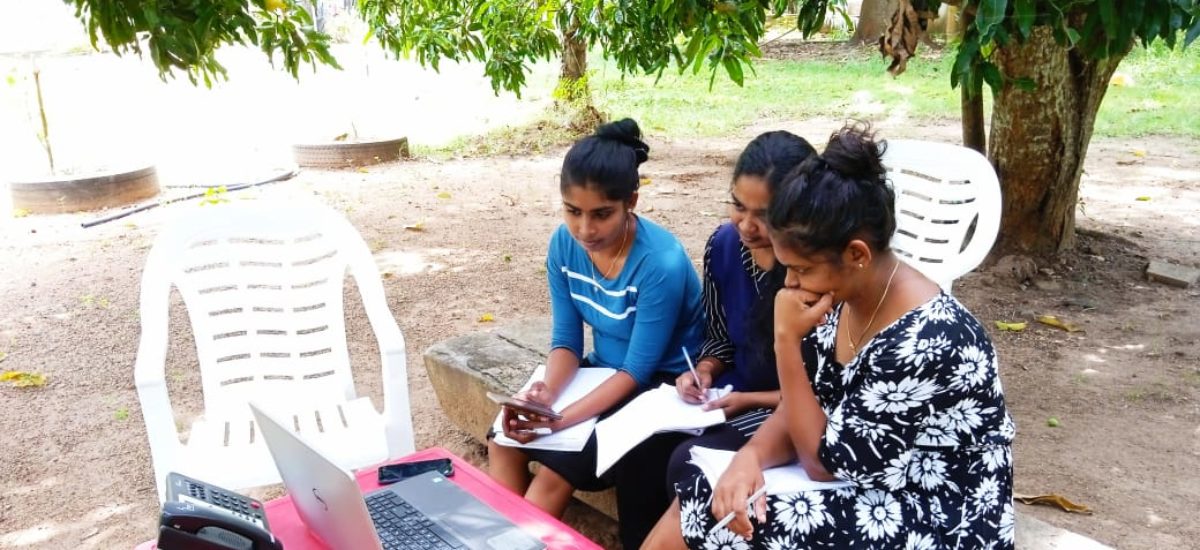Today is International Literacy Day
Literacy rates in Sri Lanka have hovered in the high 90s for the past decade or so, impressive figures no doubt; enough for the country to be publicised in official publications as being the most literate in South Asia. However by modern standards of what literacy entails, the picture painted is not quite as accurate as the data indicates. Literacy today has expanded to encompass the means to education. Where literacy implies the ability to read and write, education is the ability to acquire knowledge in the widest possible sense. The two are inextricably interlinked; one being a process which leads to the other but they are not quite the same as generally assumed until quite lately. Literacy has expanded to include the ability to navigate and interact with technology, which now stands as a ready source of information. In this time of a global pandemic and social distancing, the connections between technology and literacy are more pronounced than ever. The UN has considered literacy as being a “driver for sustainable development… an integral part of education and lifelong learning premised on humanism as defined by the Sustainable Development Goal 4.”
Sandramohan Thanuja, Rajika Udayanthi Senarathna, and Thangaiyah Vinothini are from the Vavuniya. Dalini Suntharalingam is from Mullaitivu. They work at the Oppuravilam Center for Peace in the outskirts of Vavuniya – Thanuja, Vinothini and Rajikka as pre-school teachers and Dalini as a ‘befriender’. The four of them connect on zoom twice a week to learn English.
Literacy and its New Paradigms
Vinothini, Thanuja, Udayanthi, and Dalini are well beyond the threshold used to mark Sri Lanka’s 90% plus literacy rate. They are fluent in their mother tongue and can speak and understand enough English to carry on a basic conversation. Vinothini is on track to being trilingual, speaking Sinhala relatively fluently and even stepping in during the course of the conversation to translate Tamil to Sinhala.
They represent the making of the demographic that aims to push beyond the capability of speaking, reading and writing in one’s first language alone. Their desire to learn English, which they constantly referred to as the international language, goes beyond their want to just to communicate in English. They spoke of English as a gateway to information both online and off. Thanuja, for example, expanded on her desire to learn English due to the number of books she could refer to when she begins her Sri Lanka Administrative Service (SLAS) exams.
Although they did learn English to some extent in school, a common thread amongst was their inability to learn the basics and the structure of the language. Book learning (as it was put by Thanuja and Vinothini) was the norm, which made learning English difficult, and succeeded in sapping any interest they had in learning the language.
A Second Language
During the years of war many Sinhalese living in the northern areas of the Vavuniya district moved away, settling in places like Rajanganaya, Anuradhapura and Kurunegala. Over the past few years small Sinhala communities have moved back to their former lands. Udayanthi, who is part of a Sinhala community in Mahakachchakodiya, when asked of her interest in learning Tamil, expanded on the importance of learning and knowing Tamil as a member of Vavuniya’s minority Sinhala population.
Dalini and Thanuja too spoke of their desire to learn Sinhala and explained the confidence it would give them to be able to speak Sinhala and English in addition to their mother tongue. Ease of communication was touched on specifically, perhaps implying how being fluent in only Tamil leads to certain communication breakdowns even within the demographics they live in.
The Digital Learning Angle
The shifting paradigm towards digital learning was not looked on too favourably. Concerns the four students had ranged from coverage and connectivity issues to distractions faced by not being in an environment conducive for learning and concentration. Most pertinent was the limited means of access to technology and the training to navigate it. English clearly is by far the language of the internet. To have the best use of the resources available online, one must know English. Even to navigate to an online translator to better use the resources available requires some knowledge of English, as Udayanthi pointed out. The lack of face to face interactions and personal attention to a student’s progress were also major detractors in the online learning experience – something Thanuja, Udayanthi, and Vinothini are well familiar with as preschool teachers.
It is within this context that the utility of an education and what literacy entails seems to falter – the difficulties in transitioning an education to the online sphere. Learning and teaching methods are different where interactions with pupil and tutor are minimal and where studying to a large extent becomes an independent activity. It could be argued that an over reliance on a teacher for information and a streamlined collection of study material in traditional Sri Lankan classroom environments have made the more independent and inquiring qualities that are needed for online learning difficult to nurture.
Using and navigating the digital ecosystem is in itself a form of literacy that needs to be taken into consideration when understanding the importance of literacy. The pandemic has made it quite evident how convenient it is to compress everything into the digital through an app, a social media page, a device – whatever it may be.
However the four students did see the brighter aspects of online study. The ready access to information that a classroom teacher would normally not have was touched upon as was the convenience and cost effective manner of just paying for a data package for learning.
Yet then come the issues of disparity and the inability for an uniform education for all. Vinothini, Thanuja, Udayanthi and Dalini are, to a certain extent, privileged. They are working adults and can afford to have personal devices that they could use to login to an online class or just use to browse the internet. They may not be the most adept at maximising what it can offer but all the same their access to such a device is a positive. It is not the same for everyone everywhere, especially for less privileged school children and those in remote locations. A newspaper article highlighted this digital divide where the Education Ministry’s ICT branch director was quoted as saying that only 30% of the country’s student population have access to or can afford online learning.
The digital divide only compounds the huge gap that already exists between national statistics and the vastly different ground situation. Smaller schools even in the Colombo District sometimes lack basic sanitary facilities. The South Asia region as a whole has the lowest expenditure on education, health and social services, as the recent UNICEF Report points out; Sri Lanka spends just 2.8% of GDP on education, sharing the second lowest spot with Pakistan.


